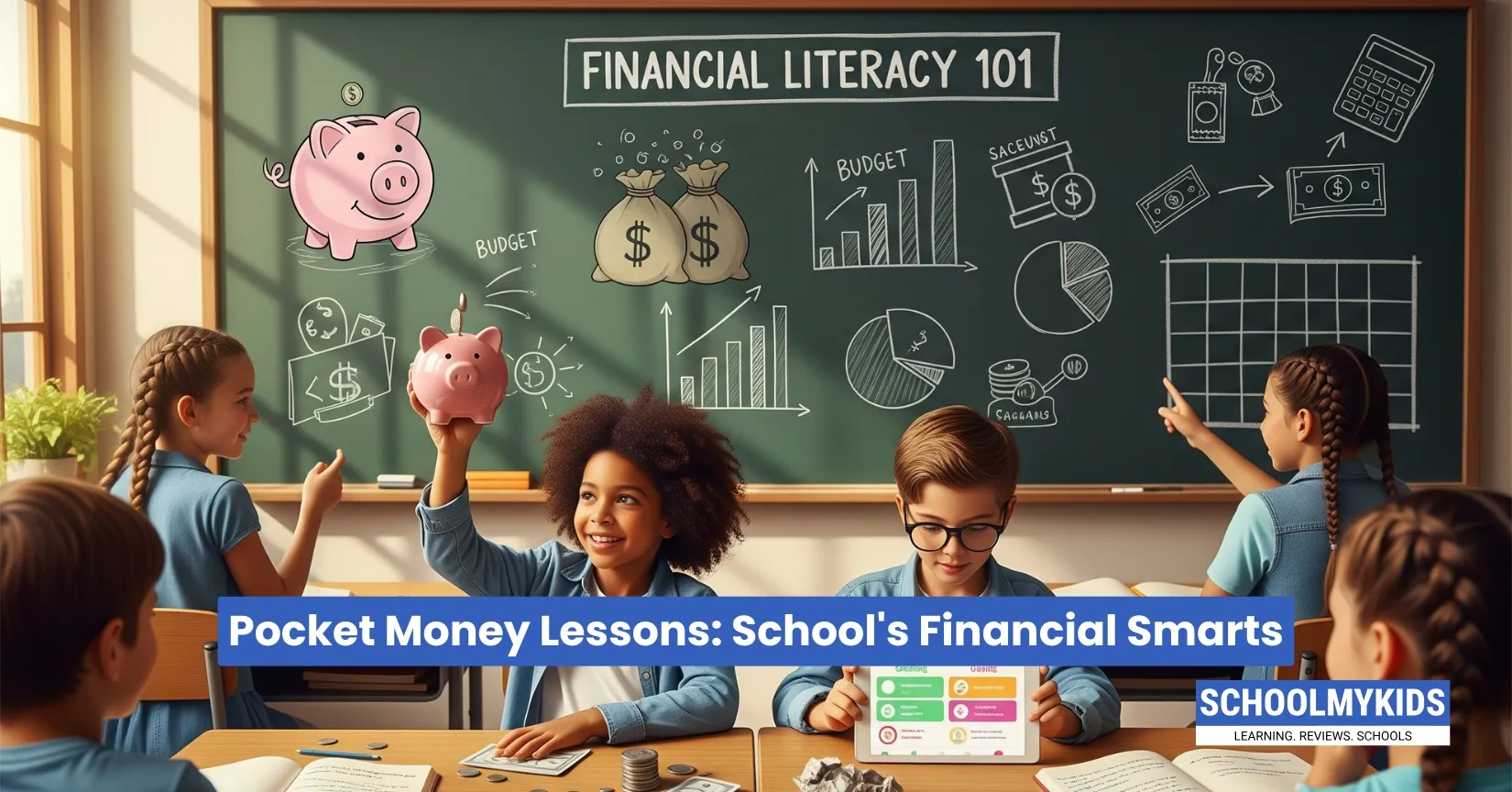When was the last time someone taught you how to make a budget or save for something you really wanted, like that new game or bicycle?
Picture this: Your 10-year-old comes home from school asking for the latest video game that "everyone has." Sound familiar? This everyday scenario is actually a golden opportunity to teach one of life's most crucial skills: money management. Yet most schools barely touch financial literacy, leaving parents to bridge this critical gap.
Why Pocket Money Matters More Than We Think
Traditional education teaches kids about ancient civilizations and quadratic equations, but somehow skips the basics of managing money they'll use every single day of their adult lives. That's where pocket money steps in as the perfect teaching tool. It's real, it's theirs, and mistakes don't cost thousands of dollars.
Think of pocket money as training wheels for financial independence. Just like you wouldn't expect a child to ride a bike without practice, you can't expect them to handle adult finances without learning the basics first.
The Four Pillars of Pocket Money Education
1. Budgeting
Start simple. Give your child their weekly allowance and introduce the "Three Jar Method":
- Spending Jar (50%): For immediate wants like candy or small toys
- Saving Jar (30%): For bigger goals like that video game
- Giving Jar (20%): For charity or helping others
Why this works: Kids see their money split visually, making abstract concepts concrete. They learn that money has different purposes, not just spending.
- Common challenge: "But I want to spend it all now!"
- Solution: Start with shorter saving goals (2-3 weeks) so they experience success quickly. Once they buy something they saved for, the pride they feel will motivate longer-term saving.
2. Saving
Make saving exciting, not boring. Help your child set specific goals with pictures. Want a new bicycle? Print a photo and tape it to their savings jar. Create a chart showing progress – kids love seeing that thermometer fill up!
Efficiency tip: Match their savings for big goals. "For every dollar you save toward your bike, I'll add 50 cents." This teaches the concept of compound interest in kid-friendly terms.
- Common issue: Losing motivation halfway through
- Solution: Break big goals into smaller milestones. Celebrate when they reach 25%, 50%, and 75% of their goal. Maybe add a small bonus at each milestone.
3. Spending Wisely: Quality Over Quantity
Let your child make spending mistakes with small amounts. When they buy a cheap toy that breaks in two days, don't rush to replace it. Instead, ask gentle questions: "How do you feel about that purchase? What might you do differently next time?"
Teaching moment: Take them shopping and compare prices. Show them how a $10 item might last months while a $3 version breaks quickly. Let them feel the difference in quality.
- Student struggles: Impulse buying everything they see
- How to help: Introduce the "24-hour rule." They must wait a full day before buying anything over $5. Often, they'll forget about it entirely!
4. Needs vs. Wants: The Ultimate Life Skill
This concept shapes every financial decision your child will ever make. Make it a game! When they ask for something, ask: "Is this a need or a want?" Don't judge their answer, just help them think through it.
Real-world practice: Take them grocery shopping. Point out needs (milk, bread) versus wants (cookies, candy). Let them help make decisions: "We have $10 left. Should we get the X-brand cereal or save money with the store brand?"
Bringing Financial Education to Schools
Imagine if schools taught these concepts systematically. Math classes could use real budget scenarios instead of conceptual word problems. Social studies could explore how different families manage money. Science classes could teach the "compound interest experiment" – watching money grow over time.
The gap: Most schools teach kids to memorize facts but not to make real-world decisions. Financial literacy fills this gap by connecting learning to daily life.
The solution: Parents and teachers working together. Share what you're teaching at home. Ask teachers to incorporate money concepts into existing lessons. Ask for financial literacy programs in your school district.
Overcoming Common Roadblocks
- "My child is too young to understand money." Kids understand fairness and trading from age 4. Start with simple concepts and build up.
- "They spend everything immediately." Normal! It takes practice. Stay patient and consistent.
- "They don't see the point of saving." Make goals visible and achievable. Let them experience the joy of buying something they saved for.
- "Math is too hard." Use round numbers and simple calculations. The lessons matter more than perfect arithmetic.
The Long-Term Impact
Children who learn financial literacy early are more likely to have emergency savings as adults. They're less likely to carry credit card debt and more likely to invest for retirement. But beyond the statistics, you're giving your child confidence and the knowledge that they can make smart decisions about money.
Conclusion
Every time your child chooses to save instead of spend impulsively, they're building a habit that will serve them for life. Every budget they create, every goal they achieve, every wise spending decision, these small victories add up to financial confidence and independence.
Your child's pocket money might seem small, but the lessons learned are huge. Start today, stay consistent, and watch your child develop money skills that many adults wish they had. After all, the best time to plant a tree was 20 years ago and the second-best time is now.








Be the first one to comment on this story.